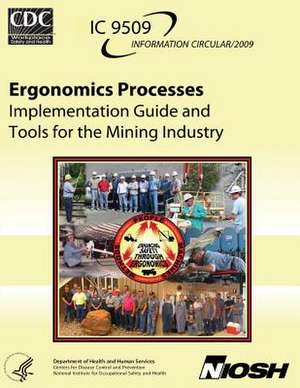Ergonomics Processes
Autor Department of Health and Human Services, Centers for Disease Cont And Prevention, National Institute Fo Safety and Healthen Limba Engleză Paperback
Preț: 116.83 lei
Nou
Puncte Express: 175
Preț estimativ în valută:
22.36€ • 23.26$ • 18.46£
22.36€ • 23.26$ • 18.46£
Carte disponibilă
Livrare economică 25 martie-08 aprilie
Preluare comenzi: 021 569.72.76
Specificații
ISBN-13: 9781493573882
ISBN-10: 1493573888
Pagini: 146
Dimensiuni: 216 x 279 x 8 mm
Greutate: 0.35 kg
Editura: CREATESPACE
ISBN-10: 1493573888
Pagini: 146
Dimensiuni: 216 x 279 x 8 mm
Greutate: 0.35 kg
Editura: CREATESPACE
